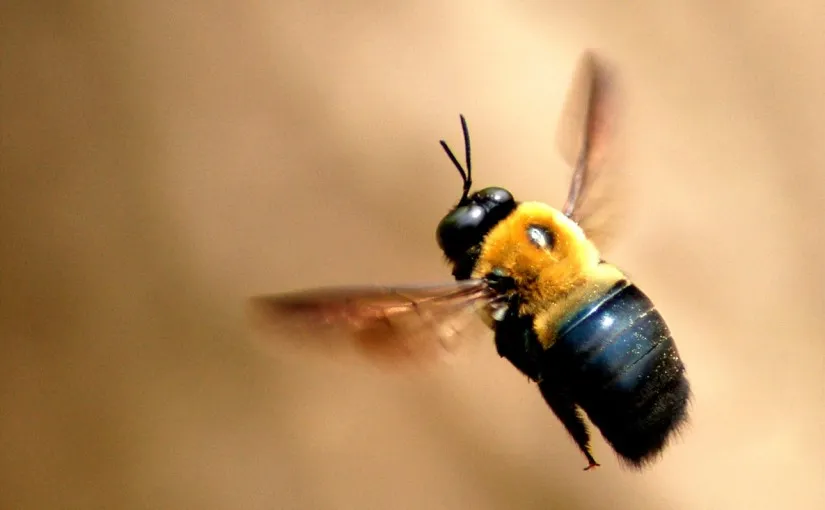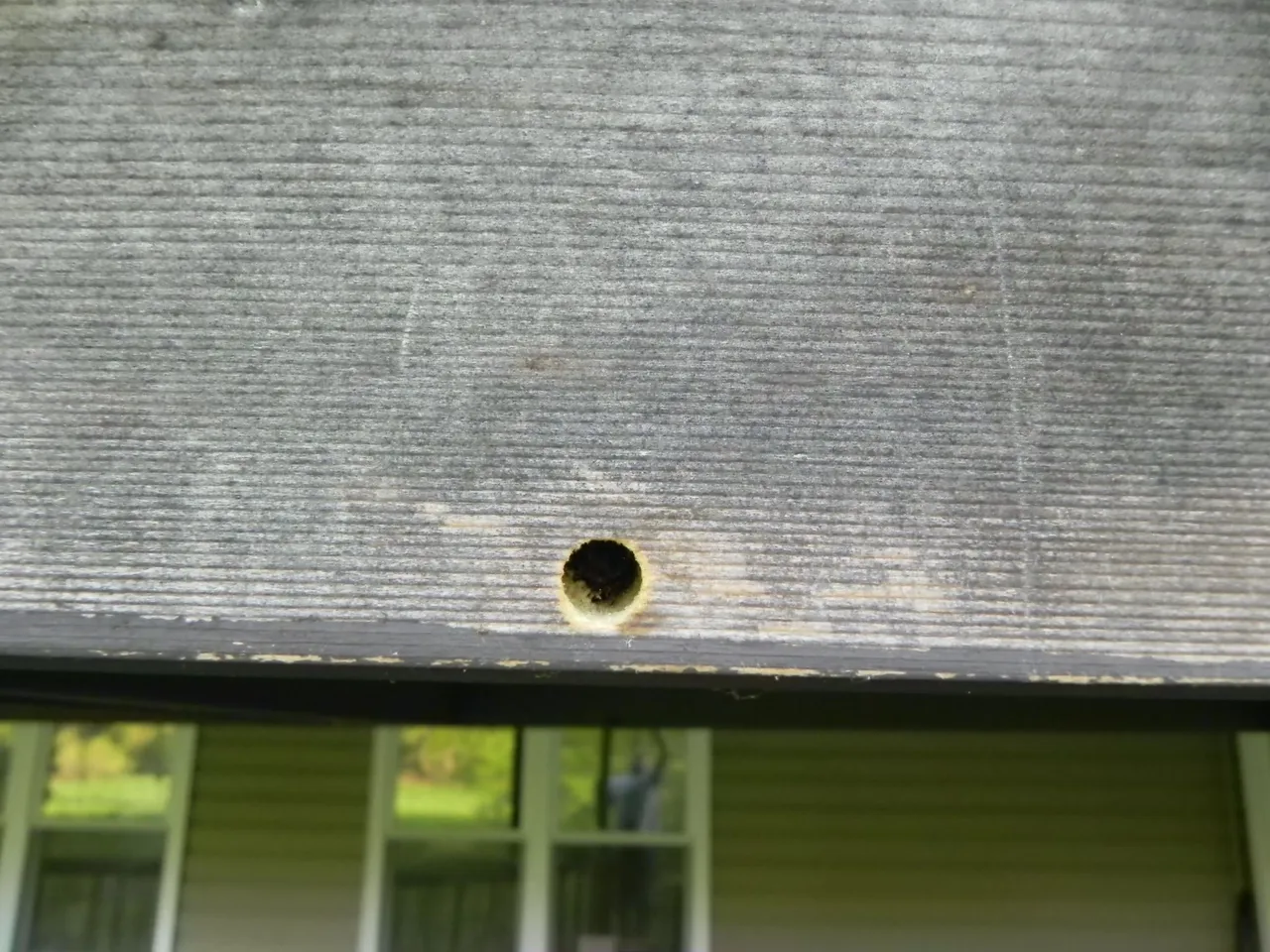
Last week, I noticed a near perfectly drilled hole in the wood on my front porch. After a second glance, I realized that a large bee was inside the hole. Wood shavings littered the porch steps. I began to look around the rest of the porch and noticed several more holes in the wood. I have been invaded by Carpenter Bees!

This situation needed to be addressed as the bees drilling could weaken the structural beams that hold the weight of the porch. The carpenter bee drills the holes to lay their eggs. The holes can be about 6 inches up to 4 feet in length. It is difficult to tell as you only can see the dime sized entry hole.

I started killing the bees with a fly swatter but this became too time consuming. I don’t like using chemicals so this is what I did to get rid of them.
Carpenter bees do not like citrus oil. I got a small cooking pot and filled it half way with water. I then cut up on orange and brought the mixture to a boil. I then let it cool down and then put it into a spray bottle. I sprayed inside the hole and a bee flew out. I then mixed some steel wool with wood putty and plugged the hole. (Carpenter Bees can’t chew through steel wool)
Here are some steps from “Do It Yourself Pest Control” to stop the problem before it starts:
To prevent Carpenter Bee Infestations – “Spray Early (early spring months)”
“Prevention is the operative word for carpenter bee control. Prevent them before you have to get rid of them.”
“Carpenter Bees attack unfinished wood under decks, sills, and decks first. Varnish or paint these wood surfaces to make them less attractive to these bees. A fresh coat of paint is unattractive to a Carpenter Bee.”
“Seal as many exterior openings as possible. The Carpenter Bees are looking for cracks that will protect entrances. Seal and caulk these cracks and crevices.”
“Carpenter Bees will reuse holes from the previous season. Caulk these holes in the fall, after the carpenter bees have emerged.”
“Carpenter Bee prevention and extermination is usually best done before nesting activity gets started. If you do not have a chance to paint or varnish the unfinished wood, before the bees bore into the wood, spray the unfinished wood in these vulnerable areas (under rail sidings, under decks, around window sills, etc) with a good residual spray.... The best time to spray preventively for carpenter bee control is spring time. Nesting and the rearing of young carpenter bees occur in the late spring or early summer.”
Sources: https://www.doyourownpestcontrol.com/Carpenter_Bees.htm
http://www.homeremedyhacks.com/13-home-remedies-get-rid-carpenter-bees/
Images: 1.Logfinish.com 2.My own 3. My own
I hope this information is a help to you. Please follow @homesteader and I will follow you back.